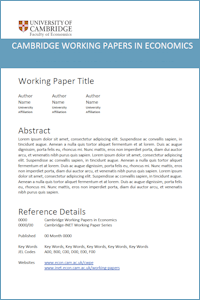
Palma, J. G., Pincus, J.
Is Southeast Asia falling into a Latin American style “middle-income trap”?
CWPE2267
Abstract: The middle-income trap was initially interpreted as an inevitable slowdown in economic growth as countries approach the technological frontier. Yet growth in Latin America (LA) stalled at low levels of labour productivity — about half of the levels of the technological leaders. Productivity growth in middle-income Southeast Asia also decelerated after the East Asian Crisis even though income per capita in these countries is lower than in LA. From our perspective, one of the key question in development economics is why in so few emerging countries the level of labour productivity have managed to break through the 50 percent barrier vis-à-vis that of the technological leaders. That is, why only very few have been able to sustain productivity gains long enough to get close of achieving high-income status. The main issue is the inability of countries to “upgrade” their growth strategies when the existing one have run their course and become exhausted. Nicholas Kaldor’s argument that manufacturing has the greatest scope to realize increasing returns to scale remains true, even in today’s decentralised, fragmented and niche-oriented manufacturing systems, but the limited size of domestic markets in the great majority of middle-income countries means that they must prioritise manufactured exports using all of the policy instruments still available to them.
Author links: Jose Gabriel Palma
PDF: https://www.econ.cam.ac.uk/research-files/repec/cam/pdf/cwpe2267.pdf 
Open Access Link: https://doi.org/10.17863/CAM.91988
